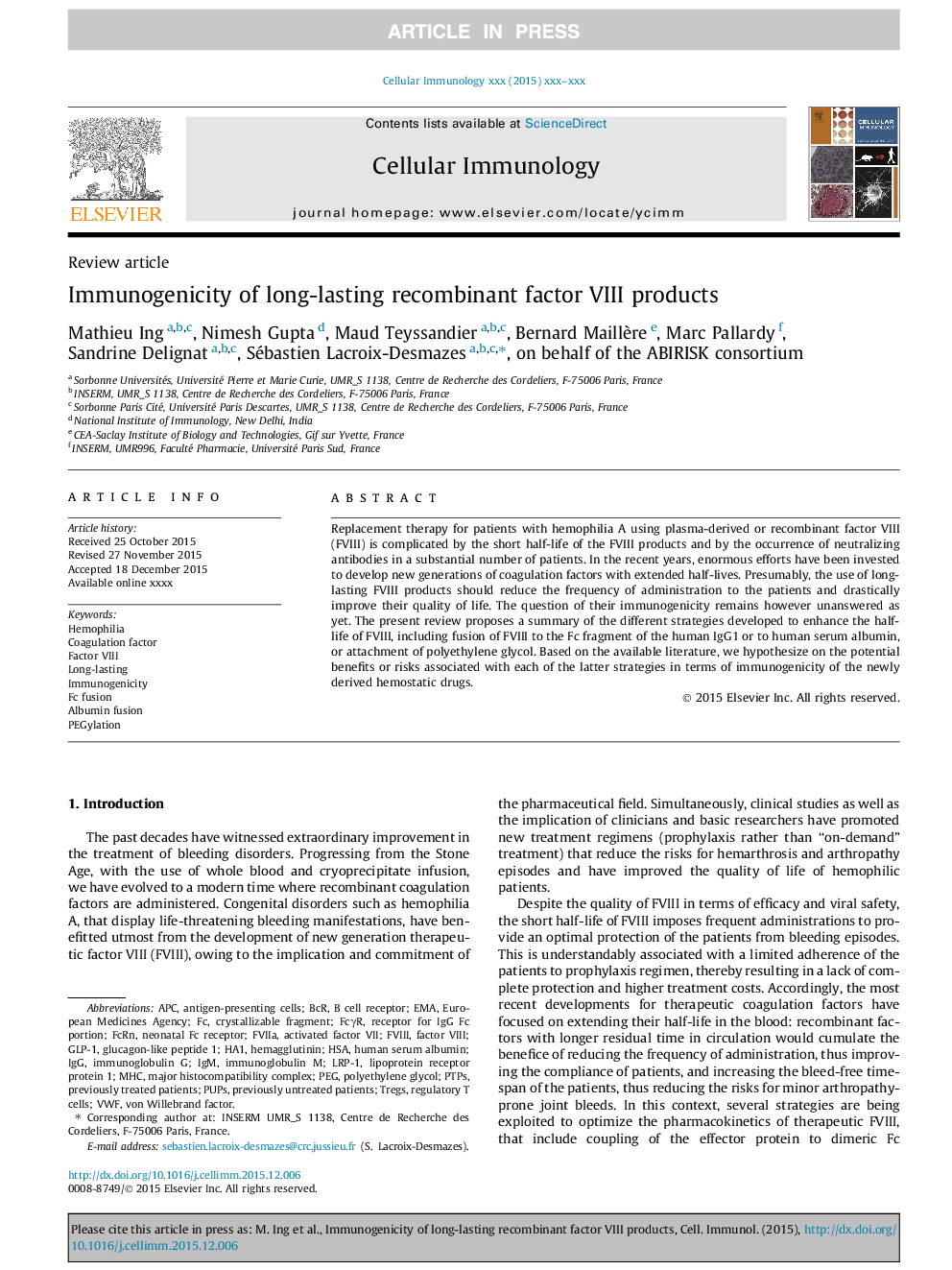| Article ID | Journal | Published Year | Pages | File Type |
|---|---|---|---|---|
| 8463724 | Cellular Immunology | 2016 | 9 Pages |
Abstract
Replacement therapy for patients with hemophilia A using plasma-derived or recombinant factor VIII (FVIII) is complicated by the short half-life of the FVIII products and by the occurrence of neutralizing antibodies in a substantial number of patients. In the recent years, enormous efforts have been invested to develop new generations of coagulation factors with extended half-lives. Presumably, the use of long-lasting FVIII products should reduce the frequency of administration to the patients and drastically improve their quality of life. The question of their immunogenicity remains however unanswered as yet. The present review proposes a summary of the different strategies developed to enhance the half-life of FVIII, including fusion of FVIII to the Fc fragment of the human IgG1 or to human serum albumin, or attachment of polyethylene glycol. Based on the available literature, we hypothesize on the potential benefits or risks associated with each of the latter strategies in terms of immunogenicity of the newly derived hemostatic drugs.
Keywords
FcRnHA1IgMFc fusionAlbumin fusionFVIIaFcγRLRP-1TregsFVIIIGLP-1APCvWFEMAHSAPEGylationIgGBCRPTPshuman serum albuminantigen-presenting cellsEuropean Medicines agencyImmunogenicityimmunoglobulin Gimmunoglobulin MPupsRegulatory T cellsLong-lastingActivated factor VIICoagulation factorVon Willebrand factorFactor VIIIcrystallizable fragmentmajor histocompatibility complexMHChemagglutininhemophiliapolyethylene glycolPEGglucagon-like peptide 1neonatal Fc receptorB cell receptor
Related Topics
Life Sciences
Biochemistry, Genetics and Molecular Biology
Cell Biology
Authors
Mathieu Ing, Nimesh Gupta, Maud Teyssandier, Bernard Maillère, Marc Pallardy, Sandrine Delignat, Sébastien Lacroix-Desmazes, ABIRISK consortium ABIRISK consortium,
